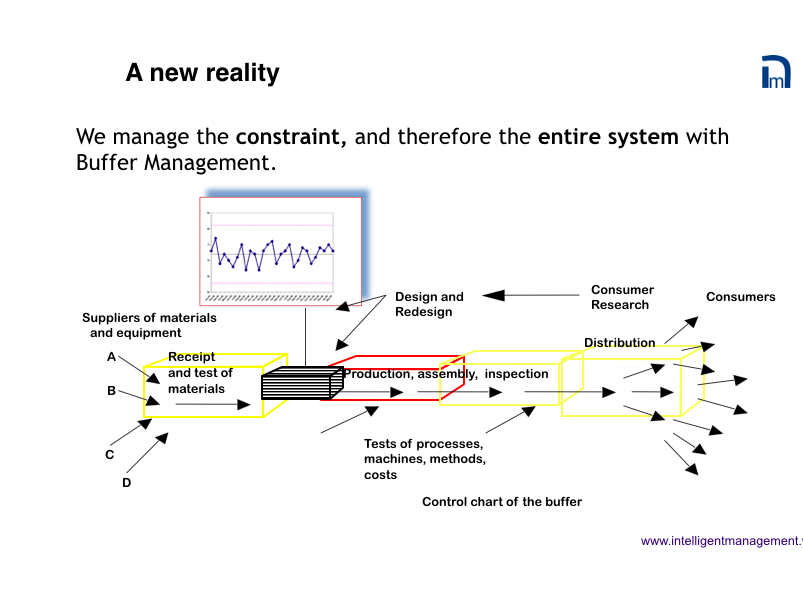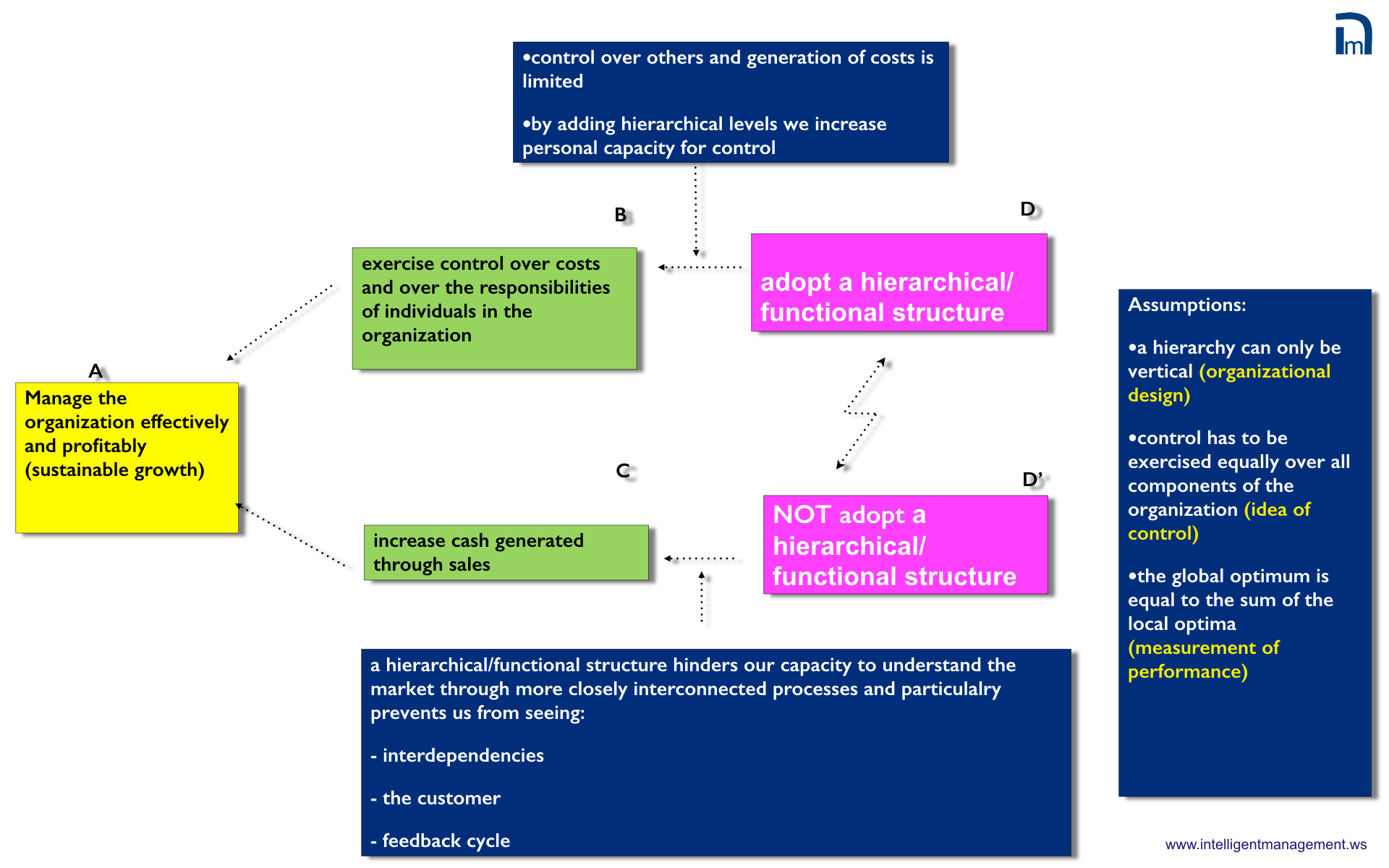What if there were a way to break free of the silo prison? What if we could build an organization where the best qualified could fully contribute and unleash their potential, where there was engagement, transparency, efficient communication and sharing of information? Well, there is. And CIOs are perfectly poised to change the music and spearhead the transformation.
In the last post we previewed a graphic representation of an enterprise viewed as a system based on Deming. This organizational design gears the entire organization towards delivering value to the customer faster, with higher quality, continuous improvement and continuous innovation.
So, it’s a nice picture but how do we make it operational? How can the CIO use this to redesign the functioning of their organization or, at least, the areas under their responsibility, namely the IT infrastructure?
In essence, it requires:
- a well structured network of interdependencies with a well identified and strategically chosen leverage point (we call it the constraint);
- a buffer that protects the leverage point from the cumulated variation originated in the system (covariance);
- well positioned control charts that provide us continuous feedback on the performance of all the relevant processes and in particular on how the buffer fills up/empties out so we can have a statistical predictive measure on how the system over all is performing.
Processes and projects lead the way
No matter how you want to look at it, any organization is a combination of two fundamental activities:
repetitive activities – we call them processes ;
one-off activities – we call them projects.
Yes, the way out of silos begins with acknowledging the way an organization operates.
However, silos exist for a precise reason which we can capture in what over the decades we have come to call in all its different forms the inherent conflict of every organization.
The pink boxes show the opposing positions in the conflict, the green boxes are the legitimate needs that have to be protected in any solution, the yellow box is the goal of the organization and the blue boxes contain the assumptions, or mental models that lead to the situation of blockage/conflict.
So, the two needs that we have to simultaneously satisfy to achieve our goal of sustainable growth are “exercise control over costs and over the responsibilities of individuals in the organization” ( a control need) and “increase cash generated through sales” (a growth need) .
This conflict exists because we make three fundamental assumptions connected with how organizations work (see blue box far right)
- a hierarchy can only be vertical (organizational design)
- control has to be exercised equally over all components of the organization (idea of control)
- the global optimum is equal to the sum of the local optima (measurement of performance)
Any solution that invalidates those assumptions while protecting the two legitimate needs will be an “injection” (as such a solution called in the Theory of Constraints) that will move us out of the silo prison.
The organization as a network of projects
An organization that overcomes the problem of silos and that allows talent to flourish, potential to emerge, transparency and shared communication can be achieved. It involves the following:
- Building a control mechanism (Accountability) not based on a functional role (reporting to a boss) but on the reliability of performance in relation to the goals of projects/processes in which the resources are involved;
- Not imposing a vertical control structure but exercise control in a manner that is intrinsic to the carrying out of projects/processes;
- Building the the control of the activities in the organization organically into the managing of projects/processes. In this way the organization becomes a synchronized collection of processes and projects to be measured with appropriate tools:
- Process Behavior Charts
- Finite capacity scheduling
- Buffer Management.
It’s true that a CIO may not have the power to make this happen companywide, but they can certainly make it operational in the area under their direct responsibility. This shift can, and indeed should lead to influencing the rest of top management towards a more systemic way of managing all of operations. CIOs are uniquely poised for this role of influence because a) the DevOps mentality prepares them for the shift and b) they have visibility of all the processes in the company.
In our next post we will provide some detail on conducting systemic management through a collection of well-synchronized, finite capacity based projects.
See also: You Say You Want a Revolution: Where Digitalization is Taking You
Sign up to our blog here and shift your thinking towards broader, systemic possibilities for yourself and your organization.
About the Author
Angela Montgomery Ph.D. is Partner and Co-founder of Intelligent Management, founded by Dr. Domenico Lepore. Angela’s new business novel+ website The Human Constraint looks at how Deming and the Theory of Constraints can create the organization of the future, based on collaboration, network and social innovation.








Leave a Reply